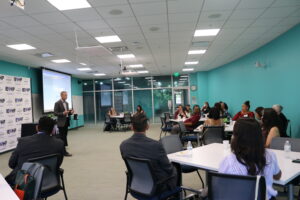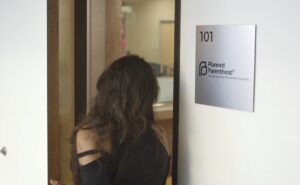Deadly citrus tree disease detected in Colton
2 min read
The incurable plant disease called Huanglongbing (HLB) that infects and kills all types of citrus trees has recently been detected in three residential citrus trees in Colton. This detection comes after the first-ever HLB-infected tree for San Bernardino County was discovered in Montclair in late November.
HLB has no cure and is spread by a small pest called the Asian citrus psyllid as it feeds on leaves and stems of citrus trees. HLB is not harmful to humans or animals, but once a tree is infected, it will die and must be removed.
To protect the spread of HLB, a quarantine is issued throughout portions of Los Angeles, Orange, San Bernardino and Riverside counties. The detection in Colton expanded the HLB quarantine in San Bernardino and Riverside counties by 51 square miles, creating a contiguous 1,275-square-mile quarantine area and will now include the cities of Redlands and Loma Linda.
It is illegal to bring citrus fruit or plant material into California from other states or countries, and to move it out of quarantine areas, as doing so could unknowingly spread the Asian citrus psyllid. If citrus is consumed on the property, be sure to thoroughly wash the citrus fruit and remove citrus leaves and stems. It is important to dry citrus tree clippings or double bag them before moving or disposing citrus plant material.
California homeowners – 60 percent of whom own citrus trees – play an important role in protecting citrus in our state and are being asked to protect their backyard trees by searching for signs of the pest and disease.
To protect citrus trees in Colton, residents should:
• Proactively inspect citrus trees for Huanglongbing (HLB) monthly, and whenever watering, spraying, pruning or tending to trees.
-Symptoms of HLB include asymmetrical blotchy and yellowing leaves, premature and excessive fruit drop, lopsided fruit, and bitter, inedible fruit.
-Call the state’s pest hotline at 800-491-1899 if disease symptoms are seen on the tree. • Cooperate with agriculture officials who may ask to inspect or treat the citrus tree. As part of tree maintenance, visit a local nursery or garden center to get advice on products that can help protect citrus trees from the Asian citrus psyllid. Recommendations on managing the Asian citrus psyllid can be found by visiting the University of California Division of Agriculture and Natural Resources website: ucanr.edu/sites/ACP/Homeowner_Options/.
• When pruning citrus trees, be sure to dry out citrus clippings or double bag them before removing the plant material from the property.
• Refrain from moving citrus plants, foliage or fruit off your property, as doing this may unknowingly spread the pest. If citrus is consumed on the property, be sure to thoroughly wash the citrus fruit and remove citrus leaves and stems. It is important to dry citrus tree clippings or double bag them before moving or disposing citrus plant material.
• Visit californiacitrusthreat.org for more information on the Asian citrus psyllid and HLB.





